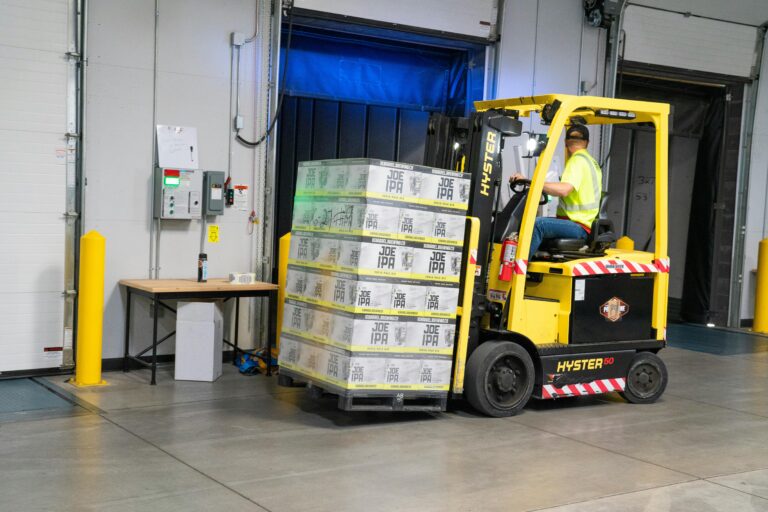Managing social media can feel overwhelming with so many tasks to juggle. Over the years, tools like scheduling apps and AI have made this job easier. This post will show how automation has changed from simple scheduling to smart, AI-powered solutions.
Keep reading—your social media strategy is about to get a lot smarter!
The Early Days of Social Media Automation
In the beginning, social platforms had simple scheduling tools to make posting easier. These tools focused on helping users plan posts without worrying about timing.
Basic Scheduling Tools
Early scheduling tools helped users post on social media platforms without constant monitoring. Tools like Sprout Social allowed content scheduling across channels, saving time for marketers.
Users could plan posts a week or month ahead, ensuring steady audience engagement.
Social media trends shifted as brands used these tools to maintain visibility and consistency. These automation tools made it simpler to stick to social media strategies and hit optimal posting times.
“Consistency builds trust with an audience,” said many experts in digital marketing.
Simplified Content Management
Basic scheduling tools solved posting problems, but they didn’t address content overload. Simplified content management platforms fixed this gap. These systems streamlined tasks like organizing posts and tracking engagement metrics.
Tools like Sprout Social helped users save time by reducing manual work on social media platforms.
Automations made cross-platform management easier. Users could plan posts, curate creative content, and maintain brand consistency without extra effort. These setups supported better audience engagement while still reflecting a strong brand voice.
Businesses saw improved performance metrics because of these efficient automation tools.
Advancements in AI-Powered Automation
AI brings smarter tools for marketers. It helps post at the best times and create customized content easily.
Smart Scheduling and Posting
Tools like Buffer and Hootsuite pick the best posting times. They analyze engagement metrics, such as likes, shares, and comments. This helps post content during peak activity hours on social media platforms.
Engagement rates improve with such targeted timing.
Predictive analytics play a big role here. By studying past data trends, these automation tools forecast the best days or times to post specific content types. Smart scheduling boosts ROI by reaching the right audience at optimal posting times.
Timing is everything in social media marketing.
Automated Content Creation
AI tools now handle creative content generation with ease. Platforms like Lately use AI to craft engaging posts for social media campaigns. These systems analyze past engagement metrics to shape the tone and style of messages.
They also suggest personalized content that matches a brand voice or target audience preferences. With AI-generated content, businesses save time while ensuring consistency across platforms.
Visuals get smarter too. AI improves strategies by recommending design elements suited for social media marketing on sites like Instagram. For instance, generative AI can create infographics or ai-generated images optimized for audience engagement.
This makes cross-platform management smoother and adds value to digital marketing efforts without extra investments in manual work.
Predictive Analytics for Engagement
Predictive analytics uses past data to predict future content trends and engagement rates. It studies patterns in audience behavior, like optimal posting times or high-performing posts.
Social media platforms use it to forecast what kind of creative content generation will drive clicks, likes, and shares. This helps brands improve their social media strategy by focusing on what’s most likely to succeed on different platforms.
AI-driven tools make real-time updates based on changes in user preferences or sentiment analysis. Through A/B tests, marketers can see which version of a post attracts better engagement metrics.
Tools like Sprout Social allow automated testing for marketing strategies while keeping brand consistency intact. Data analytics ensures campaigns match consumer needs for higher ROI and follower growth rates without wasting resources.
Benefits of AI in Social Media Management
AI makes social media management faster and smarter. It helps brands improve posting strategies using data insights.
Enhanced Audience Targeting
AI tools study user behavior and engagement metrics. This helps brands show ads to the right people at the right time. Social media platforms like Facebook or Twitter analyze clicks, likes, and shares to predict interests.
These insights improve ad effectiveness while boosting ROI (return on investment).
Studies reveal some brands cut digital ad spending without losing sales. Despite this, targeted ads can reach specific groups more easily with predictive analytics. Using automation tools, businesses create personalized content that speaks directly to their audience preferences.
Real-Time Adjustments and Optimization
AI makes real-time changes to social media strategies possible. It tracks engagement metrics like click-through rates and post interactions instantly. This helps brands adjust content, timing, or hashtags to boost performance without delays.
Through predictive analytics, AI tools suggest next steps for better audience engagement. For example, platforms like Sprout Social use data analysis to optimize posting schedules.
Automated systems also support A/B testing for dynamic campaigns. By comparing two versions of a post, they identify what works best in seconds. Chatbots enhance user experiences by giving fast replies to questions on platforms like Twitter accounts or Facebook pages.
These optimizations save time while improving ROI (return on investment).
Challenges and Ethical Considerations
Automation can feel impersonal, risking a loss of genuine connection with followers. Careful use of tools is crucial to respect user privacy and maintain trust.
Maintaining Authenticity in Automation
Transparency builds trust. Tell your audience when AI automation tools or ai-driven tools handle content. OpenAI’s GPT models can assist but must align with your brand voice. Human reviews ensure social media platforms keep their personal touch, especially in sensitive cases.
Customizing automated responses and ai-generated content helps maintain authenticity. Focus on personalized content that mirrors your brand identity. Avoid overuse of predictive analytics for engagement as it may feel robotic to followers.
Balance machine learning with real human input for genuine audience engagement and better marketing strategies.
Addressing Privacy Concerns
AI-driven tools like chatbots rely on user data to work well. Interactions that feel simple can gather private details. This raises risks of data leaks and misuse. Social media platforms also track users heavily for ads, increasing privacy worries.
Users want more AI automation but fear losing control over personal info. Companies must balance convenience with trust by using secure methods. Ethical use of social media automation ensures safe engagement strategies, leading into authenticity concerns next.
Conclusion
Social media automation has come a long way. From basic scheduling to AI tools, it keeps evolving fast. These changes save time and improve strategies for brands. Yet, challenges like authenticity and privacy remain critical.
Balancing innovation with ethics will shape its future success.



